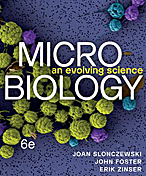Shewanella denitrificans: Difference between revisions
| Line 19: | Line 19: | ||
==Genome structure== | ==Genome structure== | ||
The genome for ''Shewanella denitrificans'' was completed on April 11, 2006 by the DOE Joint Genome Institute/Pacific Northwest National Laboratory. It is a circular genome that is 454906 bases long and code for 3905 genes. The genome has a GC content of 45% and can be found in more detail at[http://www.ncbi.nlm.nih.gov/sites/entrez?Db=genome&Cmd=ShowDetailView&TermToSearch=19373 NCBI] | The genome for ''Shewanella denitrificans'' was completed on April 11, 2006 by the DOE Joint Genome Institute/Pacific Northwest National Laboratory. It is a circular genome that is 454906 bases long and code for 3905 genes. The genome has a GC content of 45% and can be found in more detail at [http://www.ncbi.nlm.nih.gov/sites/entrez?Db=genome&Cmd=ShowDetailView&TermToSearch=19373 NCBI] | ||
==Cell structure and metabolism== | ==Cell structure and metabolism== | ||
Revision as of 23:15, 4 June 2007
A Microbial Biorealm page on the genus Shewanella denitrificans
Classification
Higher order taxa
Bacteria, Proteobacteria, Gammaproteobacteria, Alteromonadales, Shewanellaceae
Species
|
NCBI: Taxonomy |
Shewanella denitrificans
Description and significance
The Shewanella genus is a diverse group of marine gamma-proteobacteria, ranging from psychrophilic, to piezophilic, to psychrotolerant, to mesophillic. Some species are noted for their pathogenicity, still others are studied for their diversity of electron transport systems. They are capable of anaerobic respiration using a large spectrum of electron acceptors in addition to aerobic respiration. Shewanella denitrificans is noted primarily for its ability to vigorously denitrify nitrate and nitrite, converting these molecules to gaseous nitrogen. Although there are many other members of the genus that are denitrifiers, S. denitrificans is unique in its enthusiastic denitrification. It was first described in 2002 by Brettar et. al., who aligned it with the genus and distinguished it as a novel species based on physiological and 16S rRNA comparisons, among others. Like the other organisms in its genus, S. denitrificans is a rod shaped, gram-negative bacterium with polar flagella. It is found at the oxic-anoxic interface and was first isolated from the Gotland Deep, a basin in the Baltic Sea. It was first isolated as three strains, called OS217T, S220 and OS226, which were phylogenetically identified as a single species. S. denitrificans is a mesophilic organism with an optimum growth temperature of 20-25 C. Based on its fatty acid composition, S. denitrificans is most related to S. baltica, S. putrefaciens and S. japonica within the Shewanella genus, but has a different growth optimum from these species. In addition, its enzymatic activities, electron acceptors, and utilization of substrates distinguish it from the others in its genus.
Genome structure
The genome for Shewanella denitrificans was completed on April 11, 2006 by the DOE Joint Genome Institute/Pacific Northwest National Laboratory. It is a circular genome that is 454906 bases long and code for 3905 genes. The genome has a GC content of 45% and can be found in more detail at NCBI
Cell structure and metabolism
Anaerobic respiration – denitrification; reduce nitrate or nitrite to nitrogen; unfixing, part of N cycle, occurs in anoxic environments, also possible to go directly to ammonia – anammox, need nrf-gene Zumft, W.G. (1997): Cell biology and molecular basis of denitrification. In: Microbiol. Mol. Biol. Rev. Bd. 61, Nr. 4, S. 533-616. PMID 9409151 http://www.pubmedcentral.nih.gov/picrender.fcgi?artid=232623&blobtype=pdf
Ecology
Describe any interactions with other organisms (included eukaryotes), contributions to the environment, effect on environment, etc.
Pathology
Shewanella putrifaciens - infection in fish passed to humans Shewanella septicemia - caused lethal sepsis in human
Application to Biotechnology
Does this organism produce any useful compounds or enzymes? What are they and how are they used?
Current Research
Proposed to make two sub-genera based on psychrotolerance and piezophily.
References
Brettar, I.; Christen, R.; Hofle, M.G. Shewanella denitrificans sp. nov., a vigorously denitrifying bacterium isolated from the oxic--anoxic interface of the Gotland Deep in the central Baltic Sea. International Journal of Systematic and Evolutionary Microbiology [Int. J. Syst. Evol. Microbiol.]; vol. 52, no. 6, pp. 2211-2217; 2002 ISSN: 1466-5026
Kato, Chiaki; Nogi, Yuichi. Correlation between phylogenetic structure and function: examples from deep-sea Shewanella. F E M S Microbiology Ecology, VOL. 35, NO. 3, pp. 223-230; 2001 ISSN: 0168-6496
Otsuka, Taiga; Noda, Takahiro; Noguchi, Akinori; Nakamura, Haruki; Ibaraki, Kazuo; Yamaoka, Kotaro. Shewanella infection in decompensated liver disease: a septic case. Journal of Gastroenterology. VOL. 42, NO. 1, pp. 87-90; 2007
Edited by Karen Rossmassler, student of Rachel Larsen and Kit Pogliano
